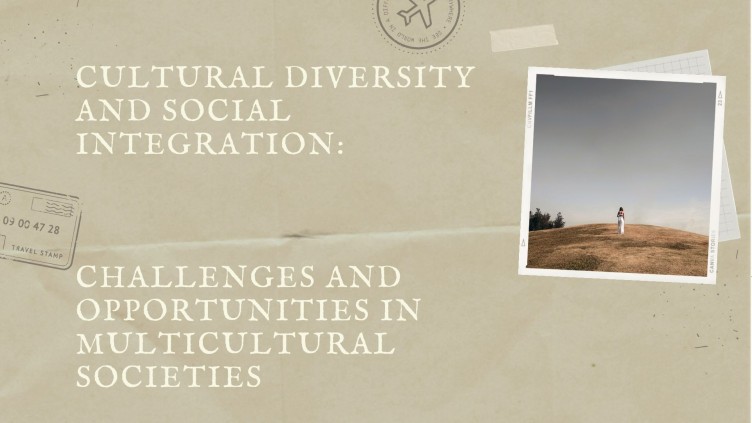In our rapidly globalizing world, cultural diversity is no longer a distant concept but a daily reality for millions of people. Cities around the globe are becoming melting pots where people from diverse backgrounds live, work, and interact. This rich tapestry of cultures brings with it a wealth of benefits and opportunities, but also presents significant challenges. Understanding and navigating these complexities is crucial for fostering harmonious and vibrant multicultural societies.
The Beauty of Cultural Diversity
Cultural diversity enriches our lives in countless ways. It brings a variety of perspectives, ideas, and traditions that can lead to innovation, creativity, and a deeper understanding of humanity. For instance, the culinary scene in cities like New York, London, and Toronto is a testament to the beauty of cultural diversity. In these cities, you can savor dishes from virtually every corner of the globe, each offering a unique story and flavor.
Beyond food, cultural diversity enhances our social experiences, arts, music, and literature. The global popularity of events like the Rio Carnival, Diwali celebrations, and Chinese New Year is a reflection of our collective appreciation for cultural expressions. These events not only provide entertainment but also educate and bring people together, fostering a sense of global community.
Challenges of Social Integration
Despite its many benefits, cultural diversity also poses significant challenges, particularly in terms of social integration. These challenges can manifest in various ways:
- Language Barriers: Language differences can hinder communication and understanding between people from different backgrounds. This can lead to social isolation and difficulties in accessing services, employment, and education.
- Prejudice and Discrimination: Unfortunately, cultural diversity can sometimes lead to prejudice and discrimination. Stereotypes and xenophobia can create divisions and conflicts within communities, making it difficult for individuals from minority groups to feel accepted and valued.
- Economic Disparities: Economic inequality can be exacerbated in multicultural societies, where immigrants and minority groups may face barriers to employment and fair wages. This can lead to social stratification and tensions between different cultural groups.
- Identity and Belonging: Navigating multiple cultural identities can be challenging for individuals, especially for second-generation immigrants who may feel torn between their heritage and the dominant culture. This can lead to issues of identity and belonging.
Opportunities for Social Integration
Addressing these challenges requires a concerted effort from individuals, communities, and governments. Fortunately, there are numerous opportunities to promote social integration in multicultural societies:
- Education and Awareness: Promoting cultural awareness and sensitivity through education is a powerful tool for fostering social integration. Schools, workplaces, and community organizations can play a crucial role in educating people about different cultures and combating stereotypes.
- Inclusive Policies: Governments can implement policies that promote inclusion and equal opportunities for all citizens, regardless of their cultural background. This includes anti-discrimination laws, language support services, and programs that facilitate integration into the labor market.
- Community Engagement: Encouraging community engagement and interaction between different cultural groups can help build trust and understanding. Community events, cultural festivals, and intercultural dialogues are effective ways to bring people together and celebrate diversity.
- Media Representation: The media plays a significant role in shaping perceptions of cultural diversity. Positive representation of diverse cultures in the media can challenge stereotypes and promote a more inclusive society. This includes diverse casting in films and television, as well as coverage of multicultural success stories.
Factual Examples of Successful Integration
There are numerous examples of successful integration efforts around the world that highlight the potential for positive outcomes in multicultural societies:
- Canada’s Multiculturalism Policy: Canada is often cited as a model for multiculturalism. The country’s multiculturalism policy, established in the 1970s, promotes the recognition and celebration of cultural diversity. This policy has contributed to Canada being one of the most welcoming countries for immigrants, with high levels of social cohesion and economic participation among diverse groups.
- Singapore’s Housing Policies: Singapore has implemented unique housing policies to promote social integration. The Ethnic Integration Policy (EIP) ensures a balanced mix of ethnic groups in public housing estates. This policy aims to prevent ethnic enclaves and promote interaction between different cultural groups, fostering social harmony.
- Germany’s Integration Courses: Germany offers integration courses for immigrants, which include language classes and information about German culture, laws, and values. These courses are designed to help newcomers integrate into German society and participate fully in economic and social life.
- The UK’s Intercultural Cities Program: The UK’s Intercultural Cities Program, supported by the Council of Europe, encourages cities to adopt intercultural policies and practices. Cities like Birmingham and Bradford have implemented initiatives to promote intercultural dialogue, social cohesion, and equality.
The Current Relevance of Cultural Diversity and Social Integration
In today’s interconnected world, cultural diversity and social integration are more relevant than ever. The movement of people across borders, whether for work, study, or refuge, is increasing. This global mobility brings a diversity of experiences and perspectives that can enrich societies, but it also requires thoughtful approaches to integration.
The COVID-19 pandemic highlighted both the challenges and opportunities of multicultural societies. On one hand, it exposed existing inequalities and the vulnerability of marginalized communities. On the other hand, it showcased the resilience and contributions of diverse groups, particularly in essential sectors like healthcare.
In the post-pandemic world, fostering social integration and leveraging the strengths of cultural diversity will be crucial for building resilient and inclusive societies. This requires a commitment to equity, empathy, and mutual respect.
Conclusion
Cultural diversity is a defining feature of our modern world, offering a wealth of opportunities for personal and societal growth. However, it also presents challenges that must be addressed to ensure social integration and harmony. By promoting education, inclusive policies, community engagement, and positive media representation, we can overcome these challenges and create vibrant, multicultural societies where everyone can thrive. As we navigate the complexities of our globalized world, embracing cultural diversity with an open mind and heart will lead us towards a more inclusive and enriched future.







